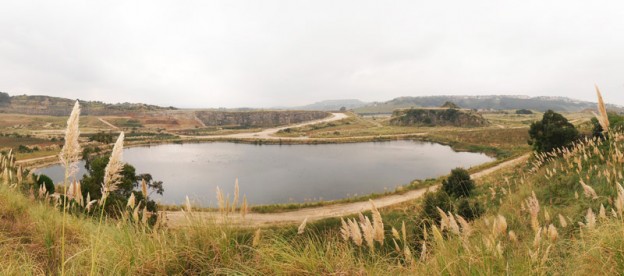
the industrial landscape
Consequently, industrial objects -like factories, quarries, mines or railways- should be understood as part of a superimposition of layers and scales in the landscape. Only from a territorial interpretation that reads each of these objects as part of a large and complex productive system, as part of an industrial society, we could understand the industrial object. Only looking to the landscape from the industrial object to the industrial territory, we could find the synergies between the elements.
However, the industrial object has first to be identified as heritage to become landscape: here, heritage should not be understood as something valuable by its outstanding history, manufacture or technique, but as something valuable in an affective way. That is, the industrial heritage can only be heritage if the society recognizes it as its own, as an inseparable part of it and a valuable and identitary element that has to be transmitted to the next generations: first, it needs a social recognition of its own value as testimony, identity and resource of a society with which it has established an affective relationship (Lalana and Santos, 2009).
The society and its heritage are both sides of the same territory, in such a way that a society loosing its heritage will be transformed into a different society and a heritage losing its society will be lost. Fortunately, there are tools to keep the memory of a place: the territory preserves the identitary elements through the toponymy. Toponymy, as taxonomy, classifies the territory and gives values to the symbology of places, describing the industrial heritage while giving it a name. The toponym, as witness of a lost landscape, is an image of the identification between the society and its landscape (Martínez de Pisón, 2000). That is, the toponym is a consequence of our eye: we name what we look to, what we culturally build as a representation of our community reality, in such a way that every society has a personal way of looking and understanding its territory (Maderuelo, 2010). Thus, each society affectively joins its territory by giving it an identity which transforms heritage and territory into landscape.
After having finished the industrial uses, the new emerged landscape reveals new values and identities related to the new society that starts to live in it. Commonly, ludic and tourist uses take the place of the industry, while the ecological restoration of the productive area is performed to recover the original environmental conditions. However, this process usually removes the characteristic elements of the industrial landscape, like the marks, the buildings and the cultural remains of the previous industrial society. Although those elements could lack aesthetic, cultural or historical values, they describe as a group a way of living and using the territory. Their loss is the loss of the working class memory (Lalana and Santos, 2009).
Somehow, the ecological restoration is a conceptual methodology for recreating landscapes with not much in relation to the pre-industrial identity. The new landscapes can actually be as generic as those emerged after the introduction of the industrial uses in the territory: if similar landscapes are created by using similar tools and industrial techniques, the use of similar techniques of restoration will create similar natural landscapes. Owing to this, the new landscape is detached of its own territorial reality: they are non-territorial landscapes, independents as a cloned image without context, where it is not possible to find the synergies and connections with its surrounding environment (Muñoz, 2012).
It does not mean that the new landscapes are worthless: the ecological restoration can create new quality habitats to shelter populations of an appreciable biological interest. Nevertheless, these areas are initially disconnected from the local identity: they need to be embraced, accepted and valued by the local society before being added to the collective memory. That is, they should be patrimonialized. There is an interesting paradox here: the restoration of an impoverished industrial landscape, but accepted as it was by the collective memory of the society, removes the memory of that productive past landscape from the local identity.
Thereby, this new post-industrial landscape, defined as image of a society, is both the construction of a collectively yearned natural area and a support land for the introduction of new uses. It also represents the loss of the memory of the previous industrial identity. That image-landscape joins in a single element the wishes and aspirations of a society and its legal right to decide about its own landscape (Priore, 2002): both the reintroduction of previous natural elements and the reuse of this area for a radically different use, create a new landscape where culture and heritage are not initially understood as valuable elements of identity. Only time and a certain nostalgic look over the place, as a consequence of the feeling of loss about the industrial identity, let the society be reconciled with its own industrial past landscape (Juaristi, 2007).
Bibliography:
JUARISTI LINACERO, J. (2007): “El paisaje industrial: entre el patrimonio histórico y la tecnología”. Fabrikart: arte, tecnología, industria, sociedad, nº 7, 96-113.
LALANA SOTO, J. L. y SANTOS GANGES, L. (2009): “Las fronteras del patrimonio industrial”. Llámpara: patrimonio industrial, nº 2, 7-20. Valladolid.
MADERUELO, J. (2010): “El paisaje urbano”. Estudios Geográficos, Vol. LXXI, nº 269, 575-600.
MARTÍNEZ DE PISÓN, E. (2000): “Valores e identidades” en El paisaje: valores e identidades (Martínez de Pisón, E. y Ortega Cantero, N., eds.). Madrid. Universidad Autónoma de Madrid, Fundación Duques de Soria, 11-45.
MUÑOZ, F. (2012): “Els paisatges de la perifèria, avui: construint la mirada sobre la ciutat al segle XXI” en Franges. Els paisatges de la perifèria (Nogué, J., Puigbert, L., Bretcha, G. y Losantos, A., eds.). Olot, Girona. Observatori del Paisatge de Catalunya.
PRIORE, R. (2002): “Derecho al paisaje, derecho del paisaje. Motivaciones sociales y objetivos políticos de la evolución de la aproximación al paisaje en el derecho europeo”, en Paisaje y Ordenación del Territorio (Zoido, F. y Venegas, C., coord.). Sevilla, Consejería de Obras Públicas y Transportes y Fundación Duques de Soria, 92-99.